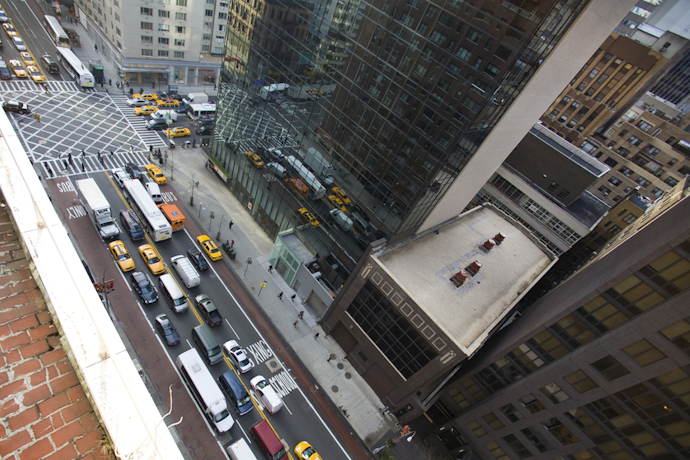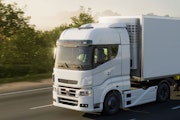How smart video fuels smart business
Learn how innovations in video powered by AI and machine learning are helping to reshape safety and efficiency.
Read more
Vision Zero is a program geared toward eliminating traffic fatalities and serious injuries related to all modes of ground travel on city streets (i.e., driving, walking, biking, bus riding and train riding), based on the use of data to transform public policy and city planning. The program was first implemented in Sweden in the 1990s, where traffic deaths have dropped 30% since 1997. Since then it has been successful in many other European countries, and has begun to gain momentum in the U.S. with 40 plus cities now working towards Vision Zero goals.
Transportation, logistics and freight industries are uniquely positioned to make an impact with Vision Zero by utilizing technology—and data—to improve driving safety and behaviors. Here are 4 ways these industries (together with public agencies) can have a positive impact:
In 2018, speeding caused 9,378 traffic deaths (NHTSA)1. By using automated driver safety software, fleet managers can leverage a range of metrics to coach drivers on following posted speed limits and avoiding other adverse driving behaviors (e.g. hard braking, harsh acceleration, not wearing a seat belt).
Reducing impaired driving is a core element of Vision Zero and of fleet safety programs. By using data from PSP reports and the Commercial Driver’s License (CDL) Drug and Alcohol Clearinghouse, fleet managers can more effectively keep unsafe drivers off the road.
A PSP report captures individual commercial drivers’ safety performance history including five years of traffic crash data and three years of roadside inspection data. Hiring managers can access a driver’s PSP report to better determine who to bring on staff.
The CDL Drug and Alcohol Clearinghouse database that helps keep drivers with drug and alcohol related violations off the road by requiring them to register in it. Carriers are required to query the system during the pre-employment screening process and update the database if any drug- and alcohol-related staff incidents occur.
Improving city planning, street designs, transportation systems, and infrastructure upgrades are all part of the long-term goals of Vision Zero task forces. Ensuring proper physical separation between cyclists and car traffic, lowering speed limits, and adding safe pedestrian zones, are just a couple of examples of smarter street design that can help improve traffic safety and reduce loss of life.
When it comes to transportation, sometimes the shortest route isn’t the safest. While we talk a lot about ensuring deliveries are made on time, it’s important to note that sometimes getting a delivery made on time is not worth the risk of taking a dangerous or restricted route. But any guesswork drivers would have had to make in the past is now eliminated thanks to route optimization technology and intelligent GPS. Route optimization software guides drivers down safe routes, helping to keep them off roads and out of areas that aren’t safe. Drivers are rerouted away from dangerous or impassable roads, restricted areas, low underpasses, old bridges, and more.
Transportation agencies and carriers have the opportunity to take the data they glean from safe driving technology and share it with the communities they serve. Specifically, data from driver management software can be used to identify trends around what time of day or location drivers typically engage in aggressive driving behavior. While GPS and route optimization software data can be used by city planners to create roadways dedicated to trucking, helping to separate public traffic from large trucks.
The future of Vision Zero will likely include autonomous driving vehicles, IoT for infrastructure, V2X communication, artificial intelligence, improvements to public transportation and more. This will help drive down traffic related deaths and promote a road system of safer streets that values human life first and foremost.
To find out how you can leverage data today to transform the safety of your fleet to meet this future vision, download the Fleet Tracking Trends Report.
Sources:
Tags: Data & Analytics




Find out how our platform gives you the visibility you need to get more done.
Learn how innovations in video powered by AI and machine learning are helping to reshape safety and efficiency.
Read moreAre you ready for vehicle tracking? Go through our checklist to learn the signs you’re ready to add fleet tracking to...
Read moreLearn how AI, machine learning, and predictive analytics is improving fleet accurating and cutting costs.
Read moreLearn how telematics can lead to operational improvements.
Read more